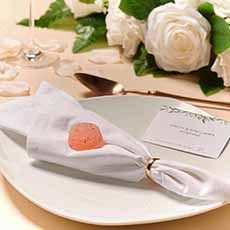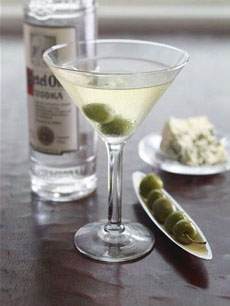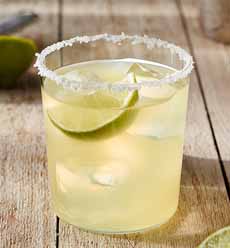|
If you’ve never had a deliciously ripe fig (photo #6), you’re missing out. A superfood rich in fiber, iron, manganese, potassium, and plant calcium*, figs can be enjoyed in many ways (and have medical uses as well).
Figs have been a mainstay in the Mediterranean since ancient times. They were a significant part of the basic diet of the ancient Greeks.
Greece remains one of the largest producers of figs worldwide.
Our Top Pick Of The Week showcases Greek figs as a spread; specifically, the Divina fig spreads (photo #1).
And what fig spreads they are! We have long purchased fig spreads, but none as good as these.
DIVINA FIG SPREAD
First: What is a spread?
Jam, jelly, marmalade, preserves, and the other types of spreadable condiments, both sweet and savory, can all be called “spreads.”
However, in the U.S. manufacturers have co-opted the term “fruit spread” to mean sugar-free/reduced calorie spreads.
Blame the FDA for the confusion: In 1940, the Food and Drug Administration created “Standards of Identity” describing what constitutes a jam, jelly, preserve, spread, etc.
Here are the different definitions of jam, jelly, preserves, etc.
Ignore the U.S. definition for “spread” as you contemplate Divina fig spreads.
Divina fig spreads are deeply fruity and complex with notes of caramel and honey. They taste like ripe figs were mashed inside the jar. They’re as close to eating a piece of fruit as we’ve ever experienced in a spread.
Even if there were only the “original” fig spread, these delectable condiments have so many uses beyond toast (see them below).
Beyond the original, Divina fig spreads are accented with other sweet and savory flavors. Choose among:
Black Olive Fig Spread
Chili Fig Spread
Cocoa Fig Spread
Kalamata Fig Spread With Almonds
Orange Fig Spread
Depending on your palate, each of them is a heavenly experience.
All the spreads use non-GMO Greek Aegean figs and are all-natural and gluten-free.
A bit of an extra commercial for Divina: Everything we have tasted from this brand has been top drawer. You’ll never be disappointed with Divina.
HOW TO USE THE FIG SPREADS
Here’s a roundup of how we use fig spread:
As a breakfast bread spread, on French toast and on porridge.
As a condiment with charcuterie, cheese plates and Baked Brie, and omelets.
As a garnish on ice cream and sorbet, or a spoonful from the jar.
As a dessert sauce or garnish, blended with mascarpone.
In a sauce or paste for pork and poultry, with balsamic vinegar, as a glaze or to deglaze a pan.
In tartlet shells or phyllo cups, topped with a dab of crème fraîche or mascarpone; or in hand pies.
In crêpe filling mixed with cream cheese or goat cheese, or in the center of baked apples.
In thumbprint cookies, rugelach, fig jam bars or homemade Fig Newtons.
Mixed into yogurt.
Mixed into a balsamic vinaigrette or barbecue sauce.
On crostini with goat cheese or chicken liver mousse/pâté, plus a balsamic drizzle.
On sandwiches and panini, especially beef, cheese, grilled cheese, ham, turkey and grilled vegetable.
On white pizza, topped with fresh figs, artichokes, arugula, caramelized onions or sweet onions, fennel, goat cheese, prosciutto, sundried tomatoes, sweet sausage, zucchini, whatever.
Shaken with tequila or vodka for a fig cocktail.
Swirled into cheesecake or ice cream.
Thinned with water to make fig ice pops.
With a chunk of parmesan cheese, in a classic Italian cheese course pairing with a Barbera, Brunello, or a Cabernet Sauvignon.
And we use them as gifts for our food-loving friends, alone or with a Baby Brie or blue cheese.
Produced by FoodMatch, a company whose main business is as producer and importer of Mediterranean specialty foods for the wholesale market, the spreads are available at fine retailers plus:
Amazon
Murray’s Cheese
THE HISTORY OF FIGS
The common fig (Ficus carica) is one of the first plants cultivated by mankind, in the Fertile Crescent.
Fossils dating to about 9400 B.C.E. have been found in an early Neolithic village near Jericho, in the West Bank.
Based on this find, fig cultivation precedes the domestication of barley, legumes and wheat, and may thus be the first known instance of agriculture!
In the millennia before Europe and the Middle East had access to cane sugar or beet sugar, figs were used, in addition to honey, as sweet snacks and in cakes, puddings and other desserts.
Figs were brought from Asia Minor to Greece and Rome, then throughout the Mediterranean, and east to India.
Figs, which can produce two crops a year, became common food. In 160 B.C.E., Cato the Elder wrote of several different varieties that were grown in his area.
A fun fact for foie gras lovers: The Romans used figs to fatten geese for an early version of foie gras.
From the 15th century onwards, figs were growing in Northern Europe.
|
|

[1] Divina Fig Spread is made in Original plus flavors: Black Olive, Chile, Cocoa, Kalamata Fig & Almonds, and Orange (photo © Murray’s Cheese).
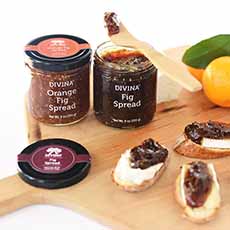
[2] Fig Spread and Orange Fig Spread crostini with goat cheese (photo © FoodMatch).
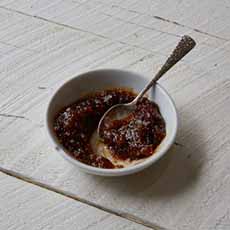
[3] Divina ready to spoon from a bowl (photo © Murray’s Cheese).

[4] Pizza With Fig Preserves & Chicken Sausage. Here’s the recipe (photo © Bev Cooks).

[5] Baked Brie and Fig Jam in Puff Pastry, garnished with pomegranate arils and candied walnuts. Here’s the recipe (photo © Aberdeen’s Kitchen).

[6] Fresh figs: from top, Brown Turkey, Calimyrna, Mission and Kadota (photo © California Figs).
|
The word fig, first found recorded in English in the 13th century, derives from the Old French figue, from the Occitan (Provençal) figa, from the Classical Latin ficus (fig or fig-tree).
Figs In The New World
Figs first came to America in 1520 with Franciscan missionaries, who brought a variety of fig from southern Spain to southern California.
Since they were grown on the property of missions, the variety became known as the Mission fig.
In the 1850s, settlers brought other varieties from the East Coast and Europe to California, which became America’s primary fig-growing region [source].
There are thousands of fig varieties in the world but today, California specializes in six fresh and two dried types: Golden and Mission dried figs, and Brown Turkey, Kadota, Mission, Sierra and Tiger fresh figs (photo #6).
Learn more about them and find many recipes from the California Fig Commission.
________________
*There are numerous plant-based sources of calcium, including almonds, baked beans, black beans, blackstrap molasses, broccoli, collards, kale, oranges, seeds, spinach, tahini, tempeh and tofu [source].
|


